- Home
- Knowledge library
- Lameness in cows: when to involve the vet
Lameness in cows: when to involve the vet
Severe and complex lameness cases should be treated by a vet, so learn the limits of your expertise and consult your vet if in any doubt.
Back to: Lesions of cows’ feet
Deep infections
Look out for:
- Swelling around one claw
- Severe lameness
- Often begins as a sole ulcer which has become infected
- The toe is ‘cocked up’
- A bead of thick white pus can be squeezed from the centre of the ulcer, as circled in orange in the photo
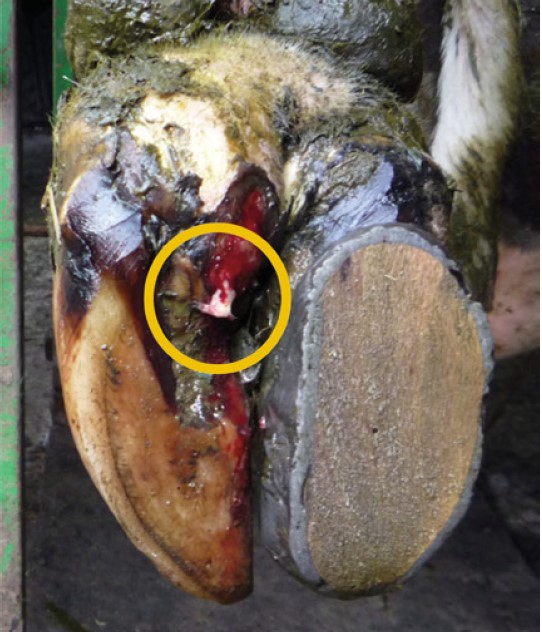
A typical sole ulcer site can be very close to the joint space in the foot, as seen here.
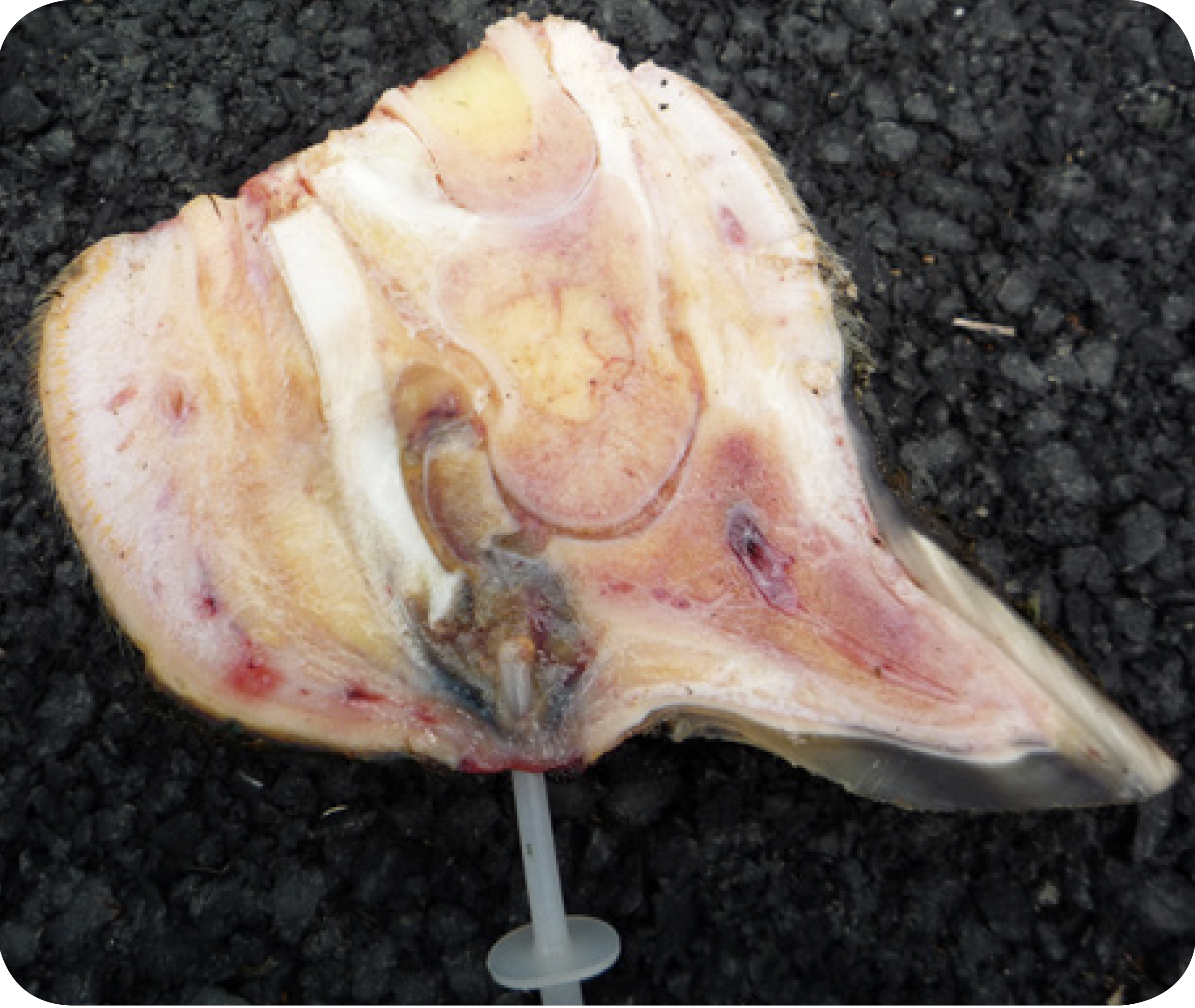
And a ‘club foot’ can develop in extreme cases.
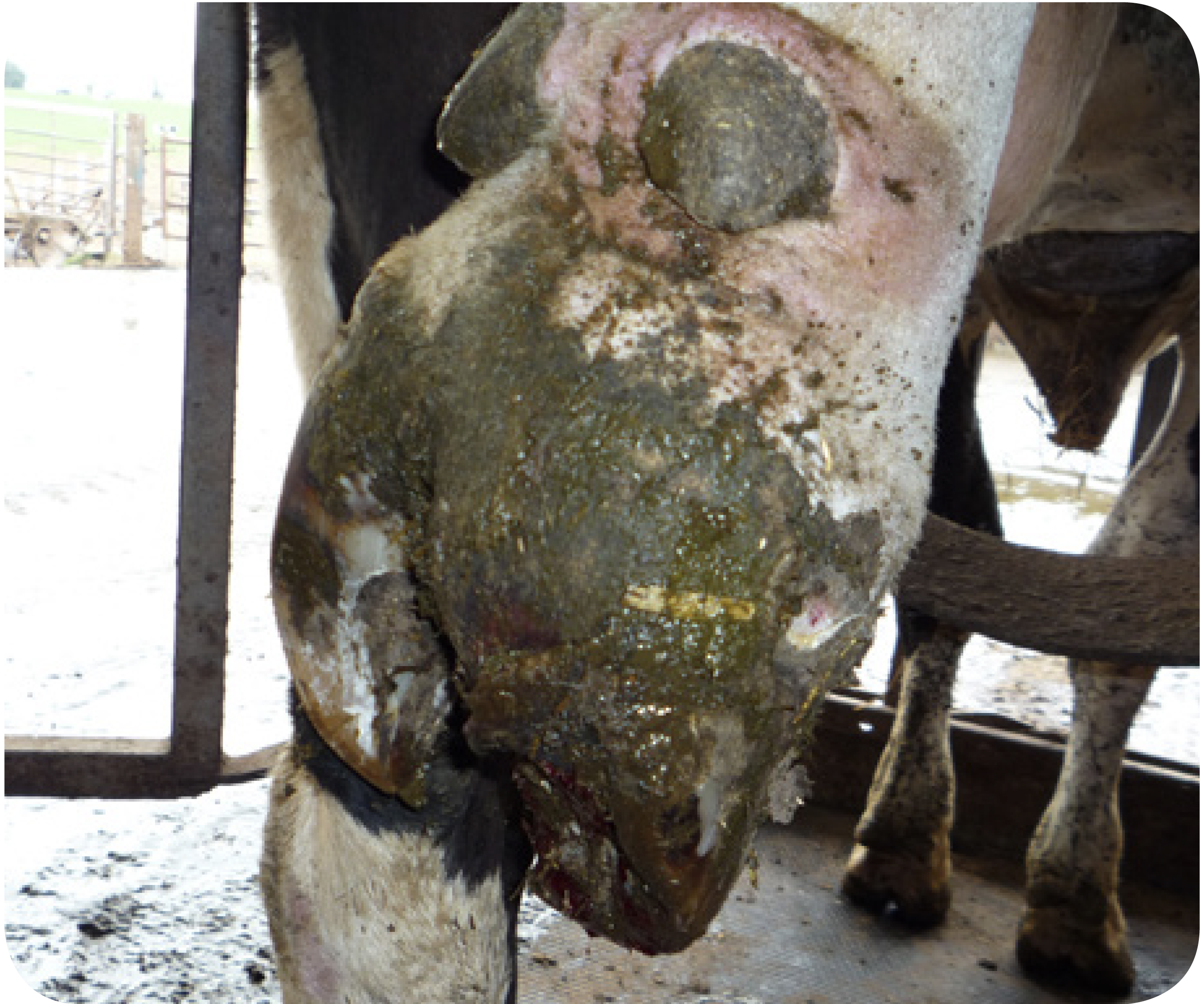
Infection in the joint is very painful; treatment will require surgery (carried out by a veterinary surgeon by law) or immediate culling.
Necrotic toe
Necrotic toe is often associated with digital dermatitis infection of the corium and can often begin as a toe ulcer which has become infected or from an infection tracking under the wall of the coronary band. The cow will walk back on her heel, but there is usually no swelling of the foot
A necrotic toe is a very painful condition; proper treatment requires surgery by a veterinary surgeon and use of anaesthetic.
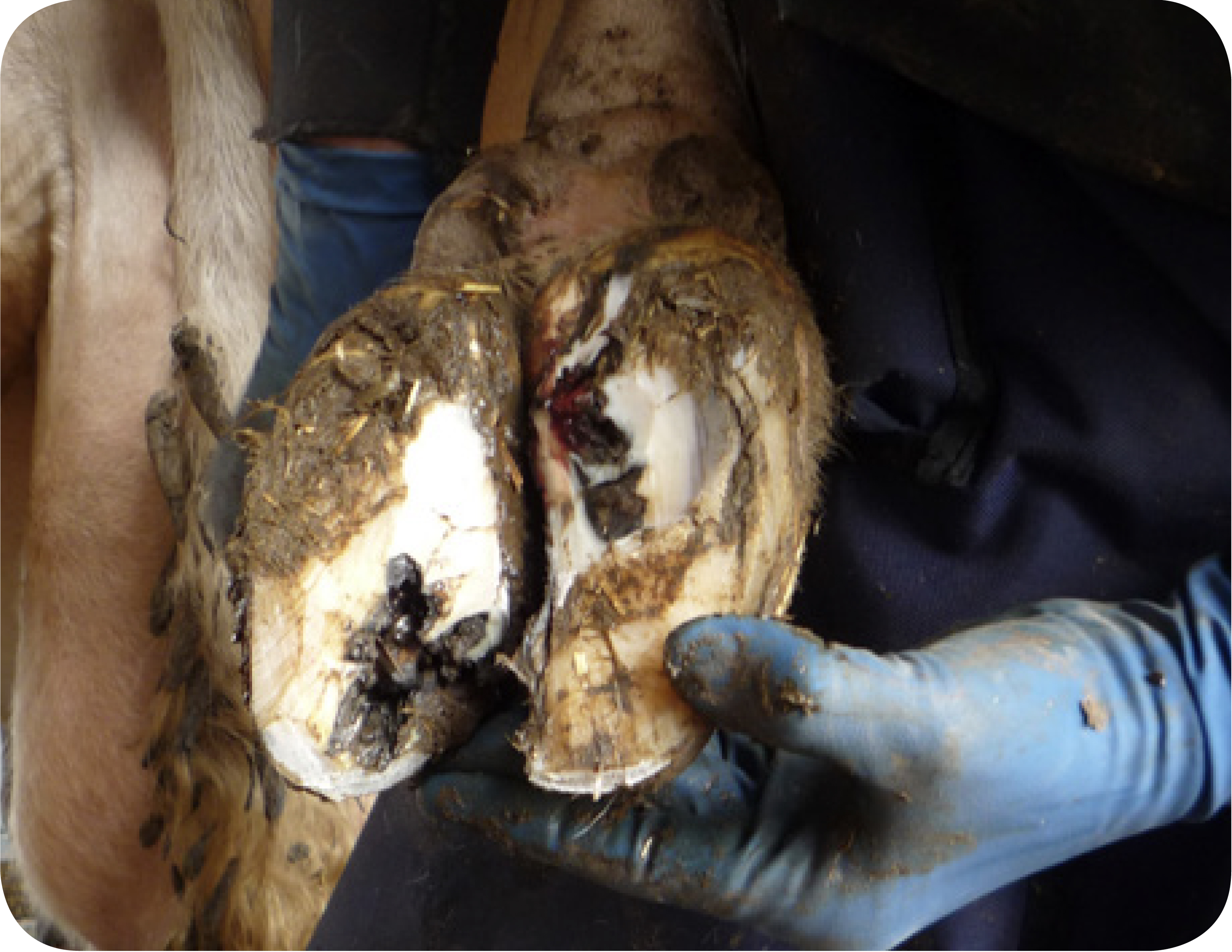
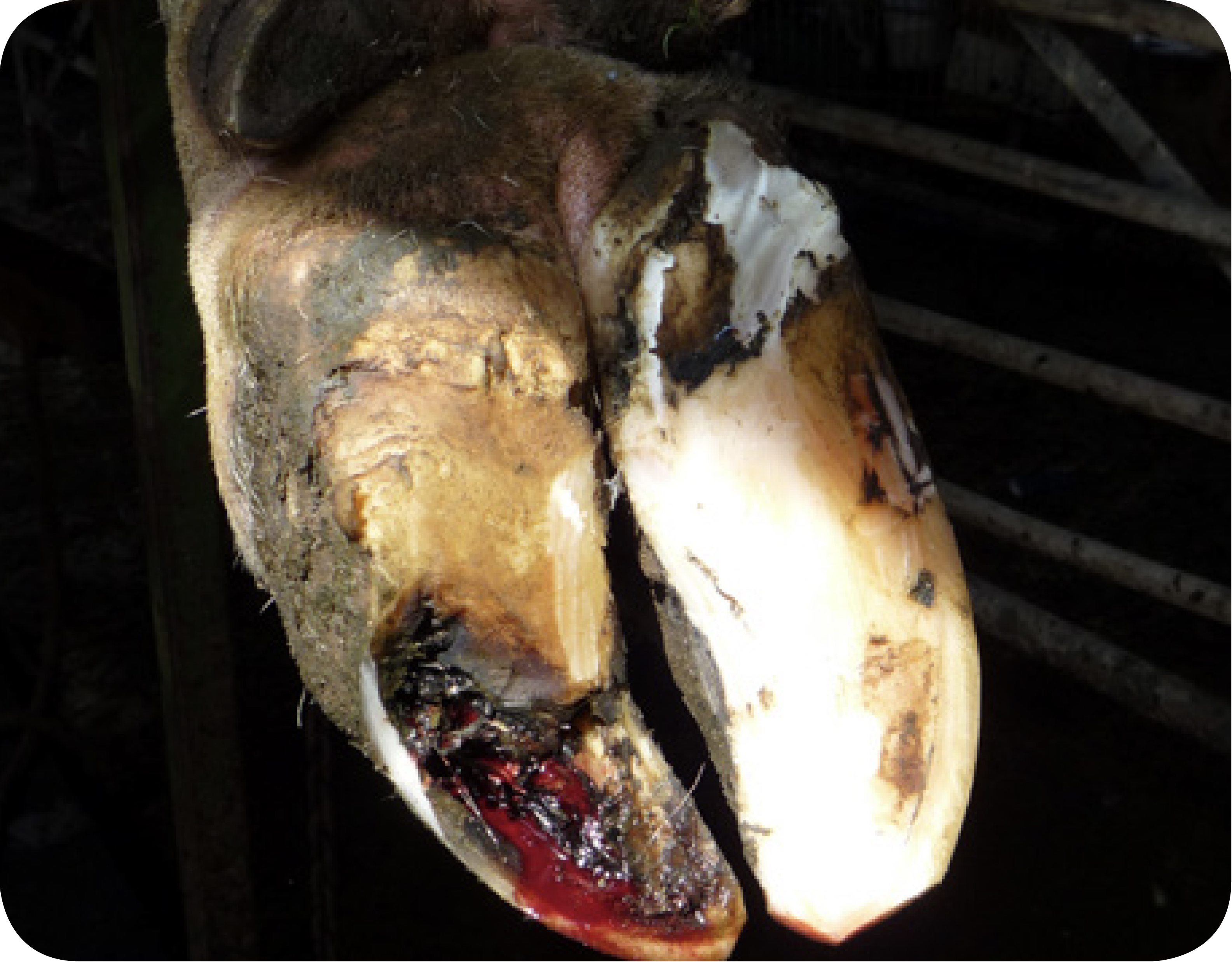
Interdigital growths
Most interdigital growths are best left alone, although careful trimming of any rough horn between the claws may reduce any associated rubbing.
Some interdigital growths will also have digital dermatitis or foul, which will require treatment.
Only vets should remove growths.
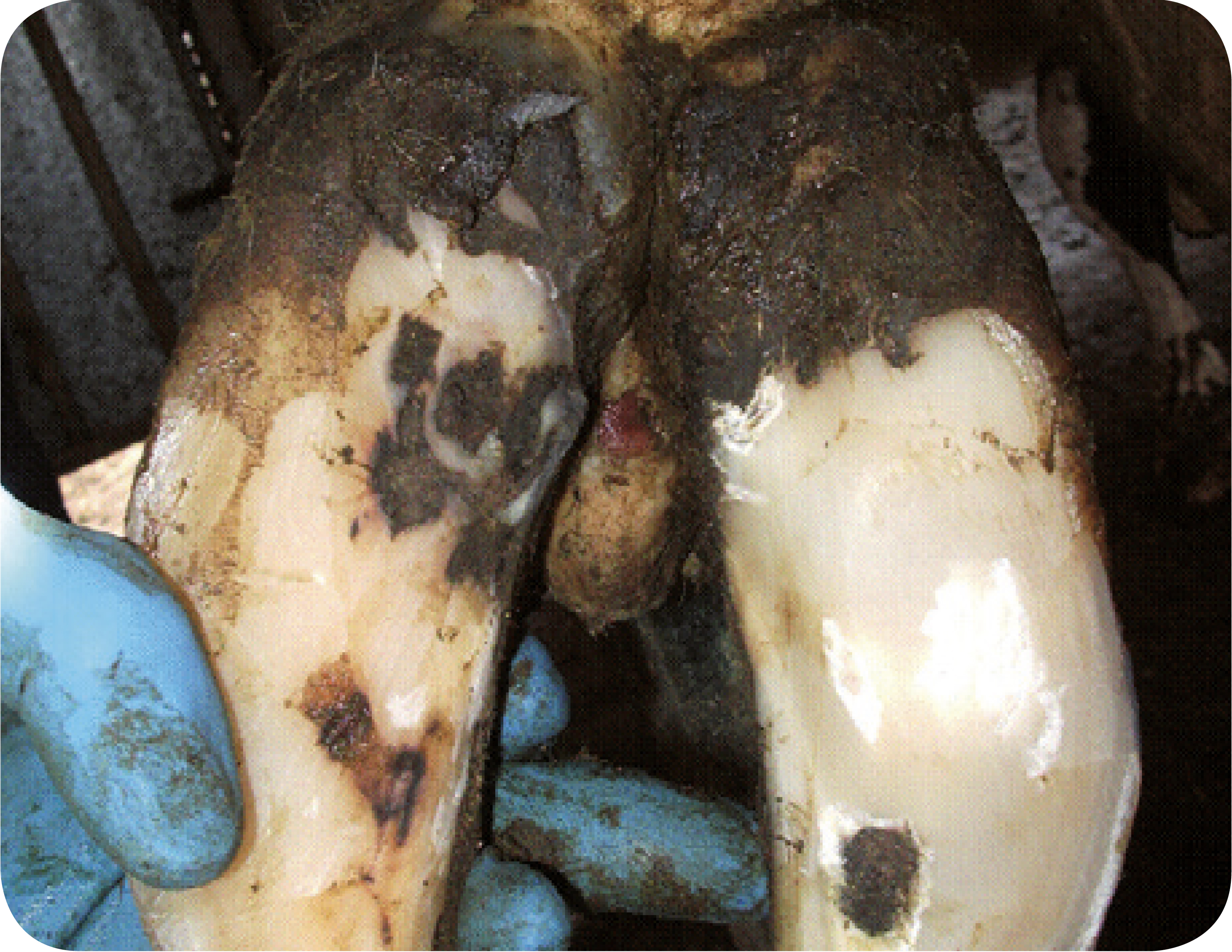
Useful links
Lesion recognition and trouble shooter guide
If you would like to order a hard copy of the Lesion recognition and trouble shooter guide, please contact publications@ahdb.org.uk or call 0247 799 0069.

